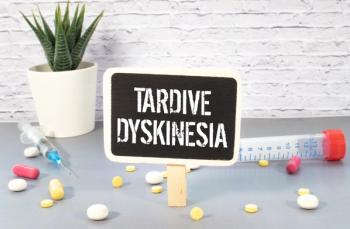
Treatment Landscape Surrounding TRD
Key opinion leaders illustrate treatment strategies for patients diagnosed with TRD.
Episodes in this series

Megan Maroney, PharmD, BCPP: Let’s move on to discussing the treatment landscape for treatment-resistant depression [TRD]. Dr Thase, could you discuss some of the typical approaches you would take when selecting treatment, and what are some of the typical agents or drug classes that you would use initially for patients with MDD [major depressive disorder]?
Michael Edward Thase, MD: I practice not unlike most standard psychiatrists, I mostly start with SSRIs [selective serotonin reuptake inhibitors]. Sometimes I’ll see a reason to do an SNRI [serotonin and norepinephrine reuptake inhibitor], or mirtazapine or bupropion as my first-line treatment. I think there are 1 or 2 branded medications that will eventually become first-line medications also once they’re no longer branded, just because we have formulary restrictions that prevent us from using more expensive treatments before less expensive. But I have to live in this world also, and even if I think that vortioxetine is a better choice for a particular patient, I may have to go through one SSRI to get there.
But for people who have not responded to 2 trials within that cohort, or with 1 trial of monotherapy and a second trial with an adjunct or an antidepressant combination, I think in 2023, I am thinking of esketamine. I am thinking of TMS [transcranial magnetic stimulation]. I’m thinking maybe this is somebody who can try that newly approved combination of bupropion and dextromethorphan, or perhaps a different combination of antidepressants, or an antidepressant and a newer-generation antipsychotic.
I often don’t do newer-generation antipsychotics until the third level because of their cost and adverse effects and so forth. But they are very effective for a subset of patients. I think in terms of the landscape, you try to learn from what’s gone before you. Did the medicine essentially have no effect, neither good nor bad? Was it seemingly inert? And if that’s the case, I’m probably going to do something different for my second choice. If the first choice was a little effective but it had really bad adverse effects, then I might try to capitalize on knowing it worked a bit. I would then try to sidestep the adverse effects with a different choice but a somewhat overlapping mechanism of action.
This is the art of practice. It’s hard to codify, and maybe even if I try to codify it, other people couldn’t get it to work quite the same way. But I’m sure those folks have their own codes of treatment that they follow. But you do want to learn from the benefit or the partial benefit or the adverse effects of your earlier choices and try to capitalize each time a treatment fails. Because it’s the treatment that fails, not the patient. Each time a treatment fails, you take that knowledge, work it into the plan, and you do something different.
Neil Skolnik, MD: If I could follow up on that, you mentioned adverse effects. The other part we’ll often do is decide sometimes a side effect is a good effect. For an older person who is having trouble, and I take care of a lot of geriatric patients, if they’re losing weight and maybe up at night ruminating, mirtazapine, which is a bit sedating and might help them with appetite, might be something I’ll use as an initial agent. But I would never want to use that in a young person who’s worried about weight issues. The other time where I think I’ll preferentially choose an agent over another is because we have a number of patients, it’s not infrequent in primary care to see people who also have chronic pain. There an SNRI has a particularly good effect in terms of its other beneficial effects. It’s good at treating neuropathic pain. So if someone is having a lot of pain, which can lead to depression, I might preferentially start with an SNRI, something like duloxetine, to treat both pain and depression.
Megan Maroney, PharmD, BCPP: Definitely, especially if that can limit the use of other medications. As a pharmacist, I’m always looking for ways to treat with the least amount of medication we can.
Transcript edited for clarity.
Newsletter
Pharmacy practice is always changing. Stay ahead of the curve with the Drug Topics newsletter and get the latest drug information, industry trends, and patient care tips.



































































































































